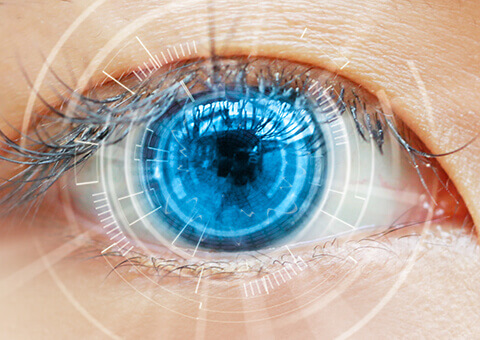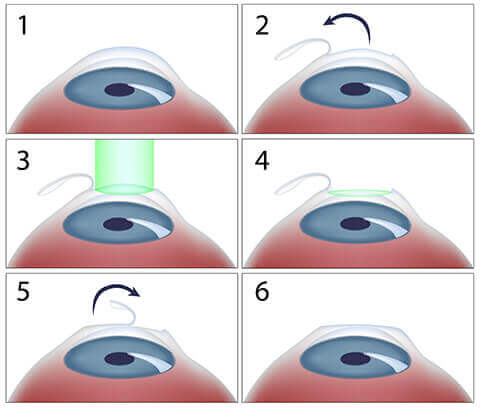LASIK

For over 25 years doctors have placed incisions in the cornea to treat nearsightedness (myopia), farsightedness (hyperopia) and astigmatism. In the early 1980s, researchers began looking at lasers to improve the precision and predictability of altering the shape of the cornea. They found that the excimer laser could remove tissue with up to 0.25 microns of accuracy. Currently in it’s second decade of use, the technologically advanced excimer laser has added a tremendous amount of precision, control and safety to the surgical correction of vision errors. Using this remarkable technology, the cornea is reshaped to conform to your glasses or contact lens prescription, thereby reducing or eliminating the dependence on corrective lenses.
LASIK, which stands for Laser Assisted In Situ Keratomileusis, offers a number of benefits over other forms of vision correction because it is performed under a protective layer of corneal tissue.
As a result, there is less:
- Surface area to heal which results in faster recovery
- Risk of scarring
- Risk of corneal glare and haze
- Post-operative discomfort
The continuing advancements in LASIK laser vision correction allow patients the possibility of achieving better than 20/20 vision.
Approximately 700,000 LASIK procedures are performed each year making it one of the most common elective procedures in the United States. However, it wasn’t until LASIK developed into an “all-laser” procedure, combining IntraLase with wavefront-guided lasers, that NASA approved it for astronauts facing the physically demanding conditions in space. Likewise, all-laser LASIK is now approved by the U.S military. In demonstrating his commitment to offer the best in patient care, Dr. Paveloff has the only LASIK center in Santa Barbara offering this very same technology.
Explanation of Procedure
After you have made the decision to have the LASIK procedure, we will thoroughly review your pre and post-operative instructions. The procedure generally takes less than 15 minutes for most patients.

- When you arrive, you will be given a mild sedative to help you relax.
- You will meet with Dr. Paveloff to review any questions you may have. Your eyes will then be numbed with anesthetic drops.
- After your eye has been completely numbed, an eyelid holder will be placed between your eyelids to prevent you from blinking.
- Next, the IntraLase laser will create a protective flap in the cornea. During this process, you may feel slight pressure. Once the flap is complete, you will be asked to look directly at a fixation light while the laser reshapes the cornea, usually in less than a minute.
To treat nearsightedness – the cornea must be made flatter. This is accomplished by removing tissue from the center of the cornea.
To treat farsightedness – the central cornea must be made steeper. This is accomplished by directing the laser beam to remove the tissue from the peripheral cornea.
To treat astigmatism – the cornea must be made more spherical or round.
By changing the pattern of the beam, tissue is removed in one direction more than the other producing a more spherical cornea.
The protective flap is folded back in place where it bonds securely without the need for stitches. After LASIK, some patients report a slight foreign body sensation that usually goes away within 4 to 6 hours after the procedure.
Click here to Schedule a Free Consultation today!
Paveloff Vision Center offers a wide range of financing options. Click here to learn more!

